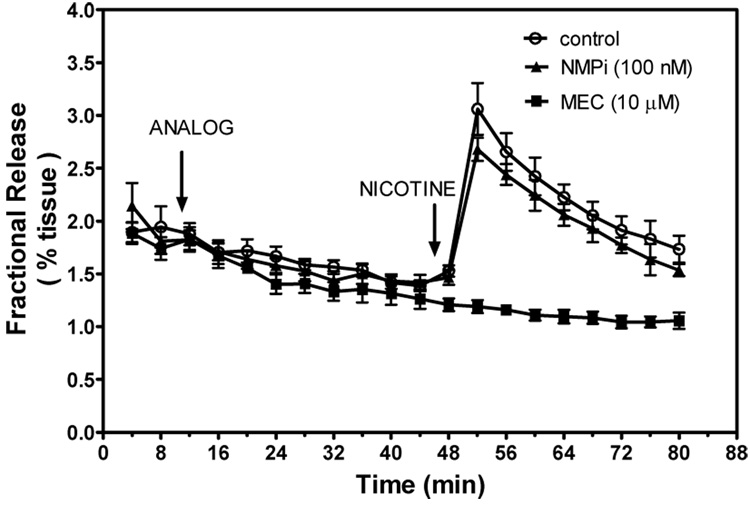Fig. 3.
S(−)-Nicotine-evoked fractional release of [3H]DA from rat striatal slices superfused with 100 nM N-methylpyridinium iodide (NMPi). Data are expressed as mean ± SEM fractional release as a percent of tissue tritium content. Control represents the amount of fractional release evoked by S(−)-nicotine in the absence of compound. The effect of mecamylamine (MEC) was determined as a positive control. Two-way ANOVA was performed to analyze the ability of MEC and NMPi (a between-subject factor) to inhibit S(−)-nicotine-evoked [3H]DA fractional release and time was a within-subject factor. Significant inhibition was obtained with MEC, but NMPi did not produce a significant inhibitory effect. n = 4–6 rats/analogue.

